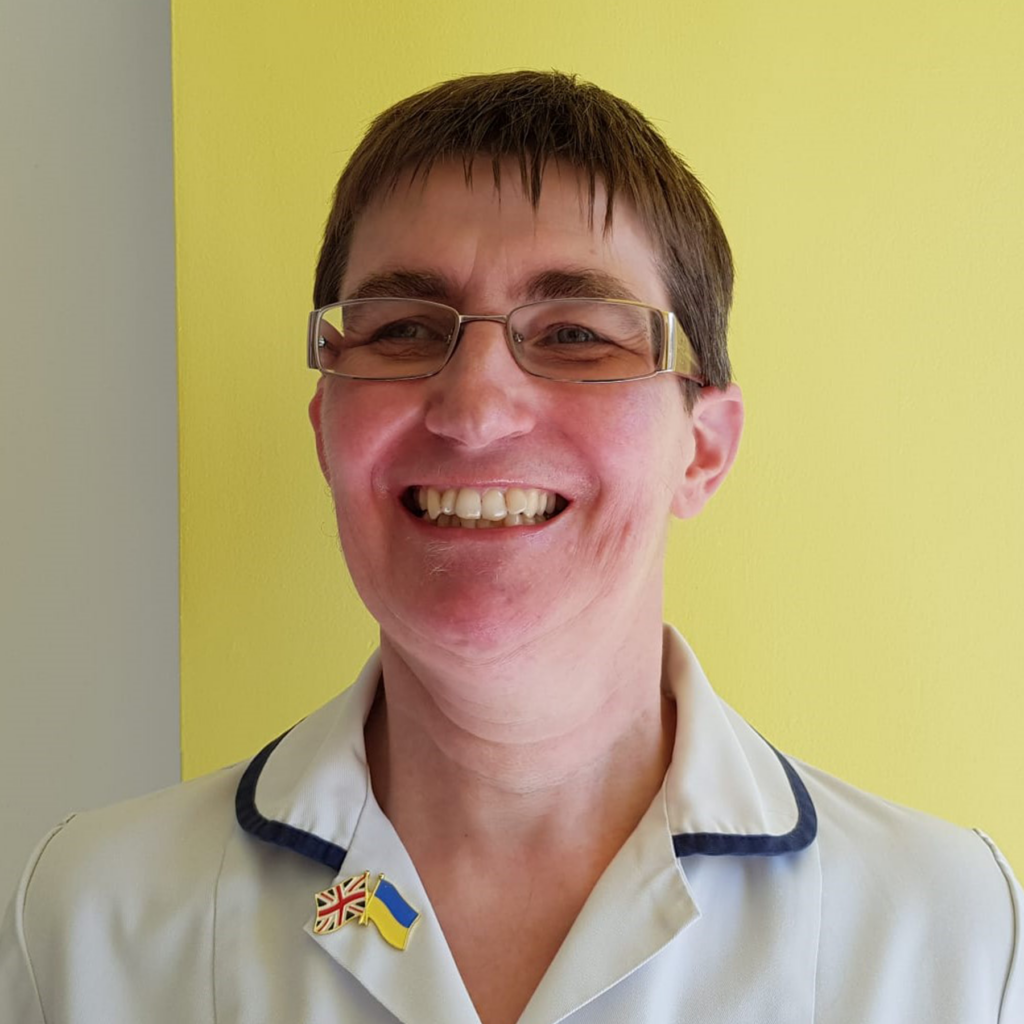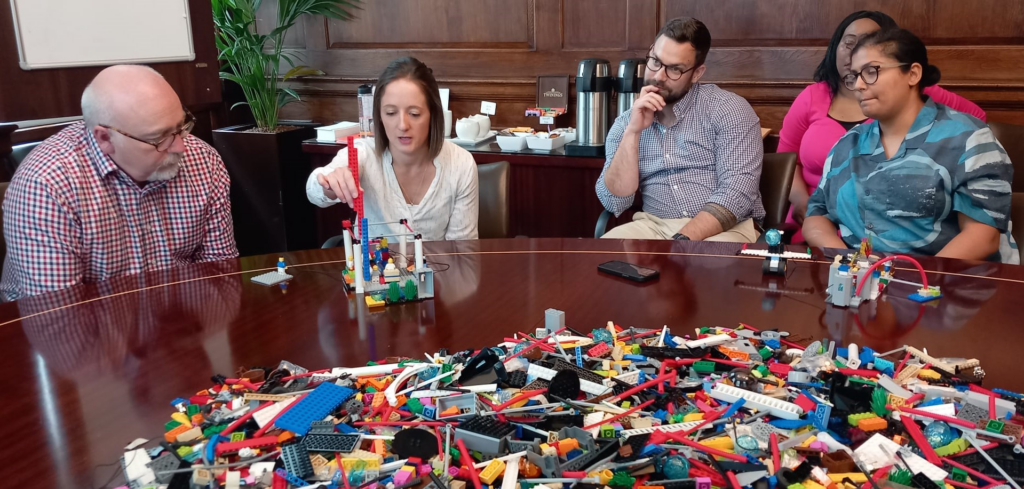- August 4, 2023

Angela Wright is a Chartered Physiotherapist and also a Florence Nightingale Foundation/HEE(SE) Clinical Education Improvement Fellow. In this latest blog from the Fellows, Angela talks about their experience in June, playing with Lego®!
“Introducing a hot topic for a hot month! Throughout the year we, as FNF CEIF Fellows have gained cohesion as a group through our monthly academic support sessions provided by Christchurch Canterbury University. Imagine our surprise when June saw the CEIF group playing – yes, seriously – playing with LEGO® SERIOUS PLAY® (LSP).
LSP was developed as a way to facilitate teams and organisations think collectively, develop ideas and problem solve in a way that gives everyone an equal voice; ensures everyone participates and contributes; and increases levels of engagement. It consequently generates a wider range of ideas and insights that otherwise may not come to the fore.
“It was introduced to us by Professor Chris Burton, Christchurch Canterbury University as a way of exploring a model of “Learning in Practice”. Learning in Practice happens within small systems – a maternity ward, a community service, an elderly care unit, a radiography clinic, A&E, a blood donation centre. Together they contribute towards the overall care of an individual. Indeed, “the quality of care produced by a large health system can be no better than the services generated by the small systems of which it is composed” (Nelson et al, 2007).
Two Fellows are developing learning in the practice environment, and LSP was employed not only to facilitate developing a model but also for us to learn how LSP can be used in “real life” to generate innovative solutions and develop concepts.
Initially we were all given a bag of around 40 Lego pieces, each bag containing the same number and types of piece. Our first task was to build a tower each. No other instruction. The aim of this exercise was merely to prove that we could all participate and that no-one could feel left out. However, I was amazed at the variety of tower styles we produced – not one tower was remotely similar to another, yet we had all used the same pieces. We demonstrated eight completely different interpretations of a simple task, highlighting the diversity of thought and almost infinite possibility. This in itself for me was a powerful demonstration of the wealth of ideas, creativity and innovation that can be generated from a small group of individuals given a level playing field. And we hadn’t even properly begun.

We then moved on to another individual task – that of creating, in Lego, our own interpretation of what a “Model of Learning in Practice” should look like.
Mine built on the concept of using metaphor that we had considered at the previous academic gathering, and used the analogy of a boat floating along a river. Rivers ebb and flow, and could represent varying conditions in the NHS. My boat pulled a series of interconnected rafts or platforms – each raft representing a key element that contributes to making learning in practice a success.
We then explained our models to the rest of the group and answered questions about them. This enabled us think deeply and challenge our own thoughts about what it is that enables learning in practice.
After a break for lunch, we were tasked to link together into a narrative the essence of bringing learning alongside practice. We did this by taking two essential elements from our individual models and separating the other parts into “enablers” and “barriers” to the model’s success. We worked together to incorporate our essential elements into a joint model, using critical discussion to facilitate its construction. Finally, we positioned the enablers and barriers around the model, distanced according to their relative importance, as agreed by the whole group.


Within our final model, the four pillars of practice (clinical, education, research and leadership) bind the whole, while leadership supports learning by creating a culture of empowerment. This provides a safe and inclusive environment, enhancing the possibility for learning and collaboration, with access to a treasure trove of all types of learning and flexible connections between higher education and clinical practice. Some of the facilitators to enabling the model to work were developing communities of practice, evidence-base, adequate rest space and good co-ordination, while time, high staff turnover and access to HEI were among the barriers to the smooth operation of the model.
We all felt that the day had flown by and I think we were all rather sad when it came to an end. Some of us had been a little dubious about the potential of playing with Lego in a healthcare environment, but we all left feeling excited and enthused about the ideas and concepts we had developed. So enthused, we might just write a paper about it!
We are now bringing together the results of our projects, writing up our findings and considering our impacts. We look forward to sharing those with you soon.”
References:
Ballat, J & Campling, P (2011) Intelligent Kindness: reforming the culture of healthcare RCPsych Publications, London
Hulks, S., Walsh, N., Powell, M., Ham, C., & Alderwick, H., (2017). Leading across the health and care system. Lessons from experience. The King’s Fund. Retrieved from https://www.kingsfund.org.uk/publications/leading-across-health-and-care-system
Nelson, E.C., Batalden, P.B,. and Godfrey, M.M., (2007) Quality By Design: A Clinical Microsystems Approach. Jossey-Bass (Wiley & Sons)
If you would like to find out more about the 2022-2023 CEIF cohort, please click here. Also please do follow #SE_CEIF and #TeamFNF on socials to keep up-to-date.